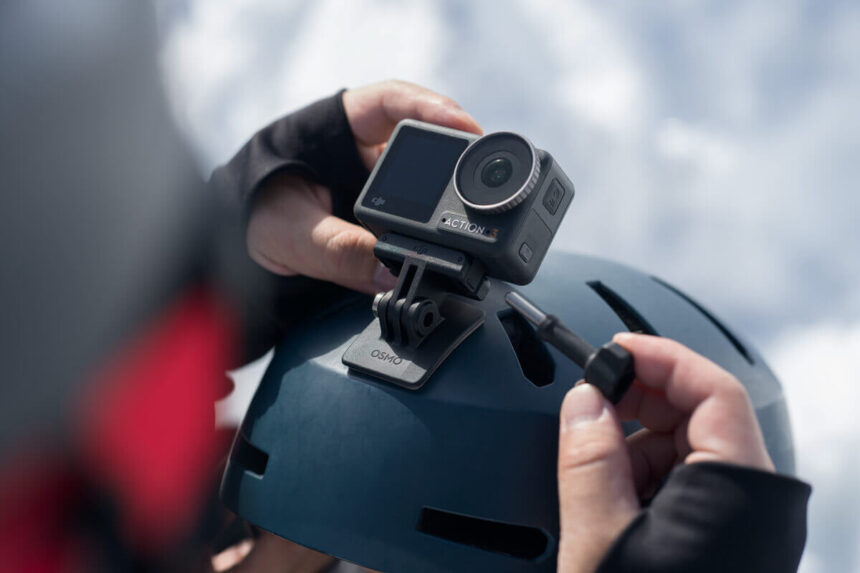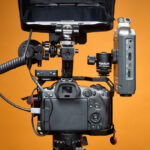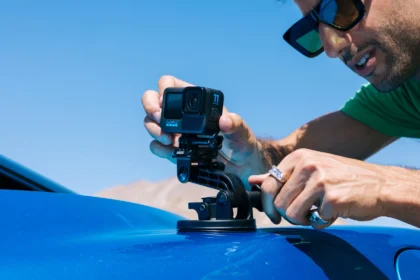Choosing the right mount for your action camera is one of the most important steps in capturing stable, high-quality footage. Whether you are cycling through the mountains, diving into the ocean, or filming cinematic travel videos, the mount you choose determines how smooth, safe, and immersive your shots will look. With dozens of mount types on the market today, selecting the best one can feel overwhelming. This guide breaks everything down in a simple, structured, and practical way so you can make the right decision based on your activity, camera type, and shooting needs.
Why Choosing the Right Mount Matters
A good mount does far more than simply hold your camera. It affects stability, angle, shake reduction, comfort, and even safety. The wrong mount can ruin your footage with unwanted vibrations, poor framing, or sudden drops. On the other hand, the right mount ensures your action camera stays secure, captures the perfect perspective, and delivers smooth, usable video.
Most action camera users rely heavily on mounts because these devices are meant for hands-free shooting. From helmet mounts to handlebar clamps, each option delivers different viewing angles and levels of stability. Understanding the differences helps you match the correct mount to each adventure.
Types of Action Camera Mounts
Before you choose a mount, it’s essential to understand the different categories available. Each mount is designed for specific activities and filming styles.
Helmet Mounts
Helmet mounts are popular among bikers, skiers, motocross riders, and adventurers who want a natural point-of-view (POV) angle. They attach directly to the top or side of the helmet.
Top helmet mounts provide a higher and centered angle, ideal for capturing surroundings. Side helmet mounts offer a more immersive look that mimics human vision.
They’re great for activities where your head is naturally stable, but they may feel slightly bulky depending on your helmet design.
Chest Mounts
Chest mounts are excellent for hands-free filming and producing stable, body-centered footage. Cyclists, hikers, motorcyclists, and climbers often prefer chest mounts because they are close to the body’s center of gravity, which reduces wobble and shake.
They also provide a lower and more dynamic POV, showing handlebars, arms, or gear in the frame, which enhances storytelling.
Handlebar and Pole Mounts
Handlebar mounts attach to bikes, scooters, motorcycles, and even trekking poles. They capture a forward-facing perspective and are great for high-speed activities.
Pole mounts, such as selfie sticks or extension poles, allow creators to shoot third-person views, overhead shots, or vlogging-style angles.
These mounts work best for smooth terrain or controlled movement, as rough surfaces can cause excessive vibration unless the mount is equipped with shock-absorbing features.
Suction Cup Mounts
Suction mounts are designed for vehicles. They attach securely to cars, boats, helmets, and other flat surfaces. They’re ideal for capturing driving footage, car vlogs, and cinematic motion shots.
However, suction mounts require smooth and clean surfaces for maximum hold. They are not recommended for extreme or unpredictable movements where the risk of detachment is higher.
Adhesive Mounts
These mounts use strong 3M adhesive pads to attach action cameras to helmets, boards, dashboards, and other surfaces. They offer solid stability and a low-profile design.
They are perfect for long-term mounting but are not reusable once removed. If you want a permanent mounting solution, adhesive mounts are reliable.
Clip Mounts
Clip mounts are versatile, lightweight, and easy to attach to backpacks, straps, belts, or clothing. They’re great for vloggers, hikers, and travelers who want quick filming without extensive setup.
They are better suited for low-impact activities, as heavy movements may cause shaking or slipping.
Tripod and Magnetic Mounts
Tripod mounts allow you to set your action camera on flat surfaces for time-lapse, interviews, indoor shooting, and steady landscape shots.
Magnetic mounts, on the other hand, offer rapid attachment using strong magnets. They are excellent for cars, gym equipment, or metal surfaces during creative shoots.
These mounts are best for controlled environments rather than extreme action scenarios.
Key Factors to Consider When Choosing an Action Camera Mount
With so many mount types available, choosing the right one depends on your activity and filming goals. Here are the most important factors to consider.
Your Activity or Environment
The mount you choose should match the intensity and nature of your activity.
For example:
- Cycling requires stable mounts like chest or handlebar mounts.
- Surfing needs waterproof adhesive mounts or board mounts.
- Car shooting benefits from suction mounts.
- Hiking works well with clip or chest mounts.
- Skydiving demands secure adhesive or helmet mounts.
Always prioritize safety and stability when choosing a mount for high-impact activities.
Shot Style or Viewing Angle
Think about the storytelling angle you want.
- POV shots are best with helmet or chest mounts.
- A cinematic third-person look is perfect with pole mounts.
- Wide landscape frames require tripod or magnetic mounts.
- Vehicle POV shots work best with suction or adhesive mounts.
Matching the mount to the shot style ensures engaging and consistent footage.
Stability and Vibration Control
Not all mounts offer the same level of stability. Some come with built-in shock absorbers or pivoting arms. For high-speed sports like biking or skiing, choose mounts known for vibration reduction.
Chest mounts often provide the most stable shots because they align with your body. Handlebar mounts should have rubberized grips to minimize shake.
Compatibility With Your Camera
Always check whether the mount supports your camera model. Most mounts fit popular brands like GoPro, DJI Osmo Action, Insta360, and Akaso. However, some brands use proprietary mounting systems.
Look for universal mounts with standard two-prong or quarter-inch screw connectors for maximum flexibility.
Build Quality and Durability
Action cameras are used in rugged conditions, so your mount must handle stress, weather, and vibration. Choose mounts made from high-quality materials such as aluminum, durable plastic, or reinforced polycarbonate.
Avoid cheap mounts that may break, crack, or loosen during shooting. Investing in durable gear reduces the risk of losing your camera mid-adventure.
Comfort and Weight
If a mount feels heavy or awkward, it can affect your performance and footage quality. Chest and helmet mounts should sit comfortably without restricting movement.
Choose lightweight materials for activities involving long hours of filming, like cycling or hiking.
Weather and Water Resistance
For water sports, always choose waterproof and corrosion-resistant mounts. Saltwater can damage metal screws or weak plastics. Opt for stainless steel components or waterproof adhesives designed for surfboards and boats.
Budget and Use Frequency
Some users need multiple mounts for different situations. If you film only occasionally, budget-friendly kits can be a good starting point. Professionals or regular creators should invest in high-end mounts for better reliability.
Tips for Getting the Best Results from Your Action Camera Mount
Choosing the right mount is important, but using it correctly makes an even bigger difference. Follow these tips to improve your footage quality.
Clean Mounting Surfaces
Before attaching adhesive or suction mounts, always clean surfaces to remove dust, oil, or moisture. A clean surface ensures a stronger grip and reduces the risk of your camera falling.
Tighten Screws and Joints
Loose screws cause shaky footage. Always tighten all bolts, hinges, and mounts before filming. Carry a small action camera wrench or tool to make adjustments on the go.
Test Angles Before Shooting
Record a short clip before starting your activity. This helps you confirm whether the framing looks right, especially with helmet or chest mounts.
Use Safety Tethers
When filming extreme sports or water activities, use safety tethers to secure your action camera. If the mount fails, the tether prevents loss or damage.
Consider Using Anti-Fog Inserts
If you’re filming in cold or humid environments, anti-fog inserts help maintain clear footage even during rapid temperature changes.
Combine Mounts for Creative Shots
No single mount covers every shooting scenario. Mix different mounts to create dynamic sequences such as combining POV helmet shots with third-person pole shots.
Final Thoughts
Choosing the right mount for your action camera ensures you capture smooth, immersive, and reliable footage across every adventure. From helmet mounts to suction systems, each option offers unique benefits depending on your shooting style and environment.
Focus on stability, compatibility, comfort, and durability. Don’t hesitate to test different mounts for various angles and activities. With the right setup, your action camera can deliver professional-quality videos that perfectly capture your journey.




